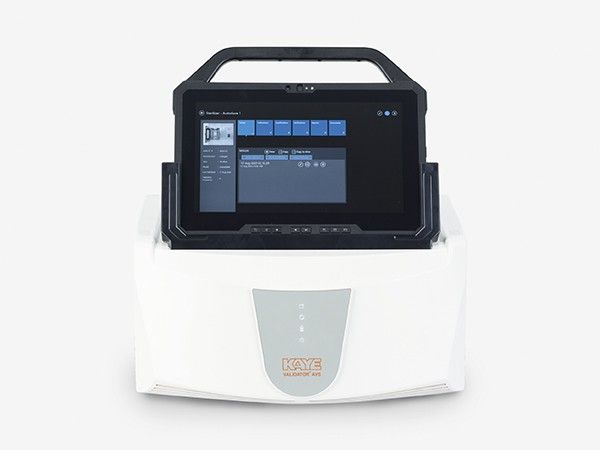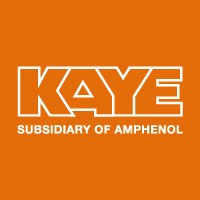Understanding Autoclave Temperature Mapping: Why It’s Essential for Sterilization Validation

Strong 8k brings an ultra-HD IPTV experience to your living room and your pocket.
In industries where sterilization is critical - such as pharmaceuticals, biotechnology, healthcare, and food processing - ensuring that autoclaves perform effectively is non-negotiable. One of the most reliable ways to verify the efficacy of an autoclave is through Autoclave Temperature Mapping. This essential process helps identify temperature inconsistencies within the autoclave chamber and ensures that every cycle meets the stringent requirements for sterilization.
What is Autoclave Temperature Mapping?
Autoclave Temperature Mapping is the process of recording and analyzing temperature distribution within an autoclave during a sterilization cycle. Using precision thermocouples or data loggers, the temperature is monitored in multiple locations throughout the chamber to ensure uniform heat penetration.
This process is part of the validation and qualification stages of sterilization equipment, often referred to as Installation Qualification (IQ), Operational Qualification (OQ), and Performance Qualification (PQ). Mapping provides documented evidence that an autoclave can consistently sterilize its contents according to established protocols.
Why Temperature Uniformity Matters
Temperature uniformity is crucial because even a minor variation can mean the difference between a sterile and non-sterile product. For example, if a medical device or pharmaceutical batch does not reach the required sterilization temperature across all points, harmful microorganisms may survive, posing serious health risks.
Sterilization typically occurs at temperatures such as 121°C or 134°C, depending on the type of load and regulatory standards. Autoclave Temperature Mapping ensures that the entire chamber—including the coldest spots - reaches and maintains the necessary temperature for the required duration.
The Steps Involved in Autoclave Temperature Mapping
1. Planning and Risk Assessment: The first step is to define the scope of the mapping study. This includes identifying the number of temperature sensors required, their placement, the load configurations, and the cycle parameters. Risk assessment is performed to determine potential hot or cold spots.
2. Sensor Placement: Thermocouples or wireless data loggers are strategically placed throughout the chamber. Typically, 12 to 15 sensors are used, placed in areas most likely to experience temperature variation. Extra attention is given to locations such as corners and areas farthest from the steam inlet.
3. Dry and Loaded Cycle Testing: Mapping is conducted both with an empty chamber (dry cycle) and a fully loaded one (loaded cycle). The dry cycle establishes baseline data, while the loaded cycle mimics real-world operating conditions.
4. Data Collection and Analysis: During the sterilization cycle, the temperature at each point is recorded continuously. The data is analyzed to ensure that all sensors reach the required temperature and maintain it for the correct duration. Graphs and tables are often used to visualize the temperature profile.
5. Reporting and Validation: The results are compiled into a comprehensive report detailing the temperature distribution, any anomalies, and recommendations for corrective actions if needed. The report forms part of the validation documentation required by regulatory authorities.
Regulatory Requirements and Standards
Regulatory agencies like the FDA, MHRA, and WHO require strict adherence to Good Manufacturing Practices (GMP), which include equipment validation. ISO 17665 and EN 285 are international standards that govern moist heat sterilization processes, including autoclaves. These standards mandate that Autoclave Temperature Mapping must be performed regularly - typically during commissioning, after major repairs, or at scheduled intervals.
Failing to perform proper mapping can result in regulatory non-compliance, product recalls, or worse - harm to end users.
Common Challenges in Autoclave Temperature Mapping
- Sensor Accuracy: Using poorly calibrated or low-quality sensors can result in inaccurate data.
- Incorrect Placement: Improper placement of sensors may lead to misleading results.
- Environmental Factors: Room temperature, humidity, and even operator error can affect the outcome.
- Inconsistent Load Configuration: Every load type may require a different mapping strategy.
These challenges highlight the importance of using experienced professionals and calibrated equipment to perform temperature mapping.
Benefits of Autoclave Temperature Mapping
✅ Improved Sterilization Assurance: Confirms that all areas of the autoclave reach and maintain the required temperature.
✅ Regulatory Compliance: Helps meet industry standards and regulatory guidelines.
✅ Enhanced Product Safety: Reduces the risk of contamination and product failure.
✅ Cost Efficiency: Prevents costly recalls and downtime associated with sterilization failures.
✅ Process Optimization: Identifies areas for improving cycle efficiency and load configurations.
Conclusion
Autoclave Temperature Mapping is a critical aspect of sterilization validation. It ensures that autoclaves perform as expected, meeting both regulatory and safety standards. Whether in pharmaceuticals, hospitals, or laboratories, a well-executed mapping study provides peace of mind and operational assurance.
By investing in proper mapping procedures and leveraging expert analysis, organizations not only ensure compliance but also protect their products - and ultimately, the health of consumers and patients.
Note: IndiBlogHub features both user-submitted and editorial content. We do not verify third-party contributions. Read our Disclaimer and Privacy Policyfor details.


